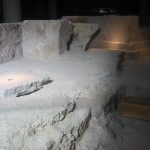THIRTY ARPISTS, ACCOMPANIED BY THEIR TEACHERS, ARE GATHERING THIS WEEKEND IN THE CITY OF MUSIC

The Department of Artistic Education of Llíria has organized, together with the Associació Catalana d’Arpistes “Sentim l’arpa”, the meeting that will take place from December 3 to 6 at the local Conservatory, with the participation of about thirty instrumentalists accompanied by their teachers.
Llíria, as UNESCO’s Creative City of Music, will once again be the stage and musical point of reference, where the participating people, in addition to living together in the different days included in the program of activities, will be part of the educational workshops that will take place they will do to the Llíria Conservatory.
In addition, a concert will be offered on December 6 at 12 noon in the center’s auditorium, which will be dedicated to four works created expressly for this great harp group and composed by Salvador Brotons, Martí Carreras, Albert Gumí and Glòria. Villanueva.
In this way, the capital of Camp de Túria becomes, this weekend, the capital of the harp. A meeting that wants to value this plucked string instrument and that has its origins in ancient Assyria.
The ages of the participating people range from 8 to 18 years old, and among them the presence of students from Girona, Terrassa, Barcelona, Torrent, Alboraia, Valencia and Llíria stands out.








